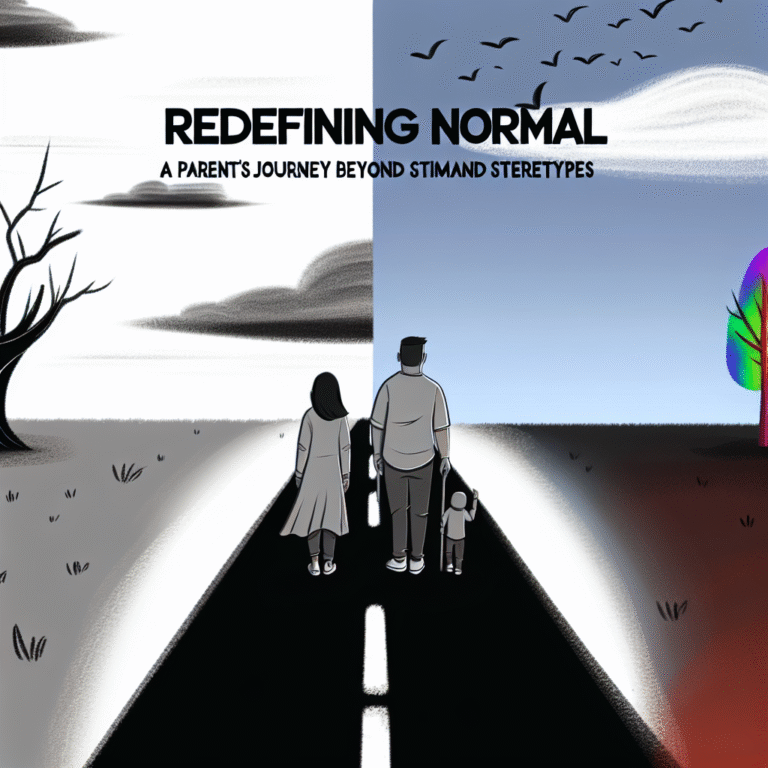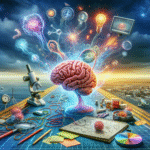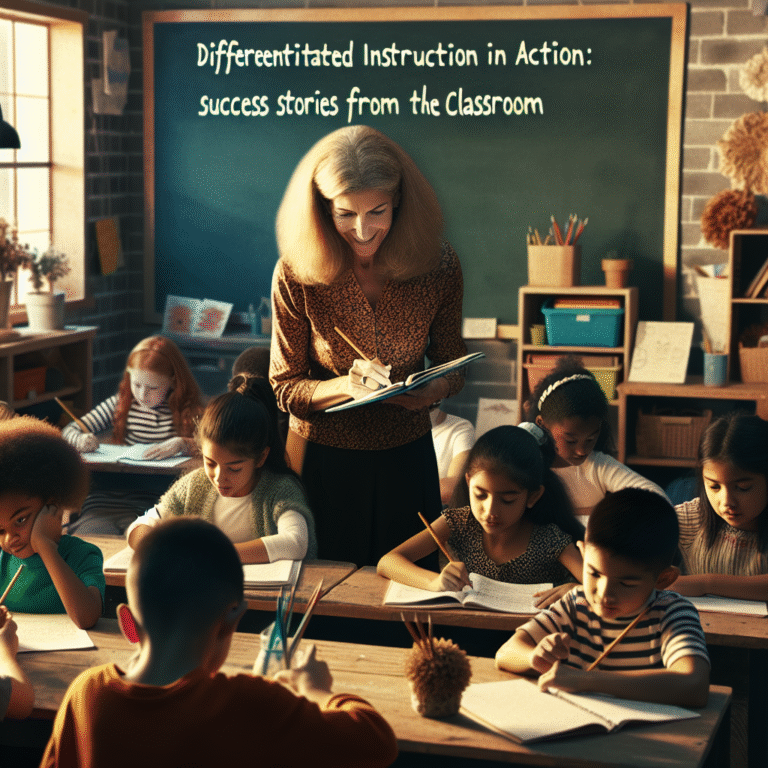
Unlocking Potential: Essential Engaging Lesson Strategies for Kids with Learning Disabilities
Introduction
In modern education, one of the most pressing challenges educators face is unlocking the potential of all students, particularly those with learning disabilities. These learners often require tailored approaches that not only engage but also empower them to thrive academically and socially. With over 1 in 5 children experiencing learning disabilities, understanding how to effectively teach these students is crucial. That’s why we’ll delve into the topic of “Unlocking Potential: Engaging Lesson Strategies for Kids with Learning Disabilities,” equipping educators, parents, and stakeholders with practical tools to foster an inclusive and enriching learning environment.
Understanding Learning Disabilities
Defining Learning Disabilities
Learning disabilities (LD) encompass a range of disorders that affect the ability to learn, process, or express information efficiently. Common types include dyslexia, dysgraphia, and dyscalculia. Recognizing and understanding these disabilities is the first step in creating a supportive educational atmosphere.
The Impact of Learning Disabilities
Children with learning disabilities may struggle with reading, writing, math, and even social skills. This can lead to frustration, low self-esteem, and behavioral issues if not addressed appropriately. It’s imperative to recognize the diverse needs of each child to tailor instructional strategies effectively.
Unlocking Educational Potential: Engaging Lesson Strategies
1. Differentiated Instruction
Differentiated instruction involves tailoring teaching environments and practices to create appropriate learning experiences for every student. This strategy is vital in classrooms with diverse learners.
Case Study: Mrs. Johnson’s Classroom
Mrs. Johnson, an experienced third-grade teacher, utilized differentiated instruction to address varying reading levels in her class. By offering multiple formats—such as audiobooks, visual aids, and hands-on activities—she created a comprehensive learning experience. As a result, students with dyslexia were able to engage with the material successfully, fostering a sense of accomplishment and improving their overall literacy skills.
Analysis
Mrs. Johnson’s approach exemplifies how differentiated instruction can be successful in unlocking potential in kids with learning disabilities. By offering various entry points to learn, she maintained engagement and facilitated a sense of belonging.
| Instructional Strategy | Description | Benefits |
|---|---|---|
| Tiered Assignments | Different levels of tasks based on readiness | Scaffolding learning, reducing frustration |
| Flexible Grouping | Small groups formed based on student needs | Encouraging peer support and collaboration |
| Learning Centers | Various stations with diverse activities | Hands-on engagement and multi-modal learning |
2. Multi-Sensory Learning
Multi-sensory learning engages more than one sense at a time. This approach caters to the diverse learning styles present in a classroom and can be particularly beneficial for students with learning disabilities.
Real-World Example: Sesame Street’s Initiative
The “Sesame Street” educational initiative employs multi-sensory methods to teach children foundational skills. Through songs, puppet interactions, and activities, they share knowledge in ways that resonate with varied learning preferences. This strategy has proven successful, as children actively engage and learn through these sense-based experiences.
Analysis
The success of “Sesame Street” in engaging children through multi-sensory experiences illustrates the effectiveness of this strategy in creating a rich learning landscape. For children with learning disabilities, tapping into multiple senses can enhance retention and understanding of complex subjects.
3. Use of Technology
Technology can be a game-changer in unlocking potential. Tools such as educational apps, online resources, and adaptive learning software can provide personalized learning experiences for students.
Case Study: Learning Ally
Learning Ally is an organization that provides audiobooks and voice-recorded texts to support students with dyslexia and other learning disabilities. This adaptive technology allows learners to access grade-level content while building literacy skills without the constraints of their disabilities.
Analysis
By utilizing technology like Learning Ally, educators can engage students in vital content areas while alleviating barriers associated with reading difficulties. This approach can unlock a child’s academic potential and enhance their confidence as learners.
4. Collaborative Learning
Collaboration among students can be an engaging way to reinforce learning and help children develop vital social skills. Working in teams allows students to support one another in their learning journeys.
Example: Peer Tutoring in Action
In a classroom where peer tutoring was implemented, students paired up to solve math problems together. Children with learning disabilities received support from peers, which built their confidence and improved their understanding of the material.
Analysis
This collaborative strategy demonstrated how social interaction and peer engagement could lead to deeper understanding and enhanced academic performance. It highlighted the importance of fostering a community within the classroom.
5. Positive Behavior Interventions and Supports (PBIS)
Creating a positive environment in which students feel safe to express themselves is vital. PBIS focuses on developing positive behaviors through encouragement rather than punishment.
Case Study: Eastside Elementary School
At Eastside Elementary School, educators implemented PBIS strategies to foster a kinder and more supportive school culture. Classroom rewards earned through good behavior encouraged students—especially those with learning disabilities—to engage actively in learning. Consequently, overall student engagement increased, helping these children feel more included and valued.
Analysis
The success of PBIS at Eastside underscores the relationship between positive reinforcement and student engagement. Employing such strategies can lead to a marked improvement in self-esteem and willingness to participate, especially for students who often feel marginalized.
Unlocking Potential: Essential Tips for Educators
Create an Inclusive Environment: Design classrooms that celebrate diversity and inclusion, encouraging all students to share their experiences and perspectives.
Set Clear Goals and Expectations: Help students understand what is expected of them through clarity and consistency. Use visual aids and reminders to reinforce these goals.
Encourage Self-Advocacy: Empower students to express their needs and preferences regarding their learning. This promotes independence and a sense of ownership over their education.
Provide Regular Feedback: Constructive feedback is essential for growth. Regular communication about progress can motivate students and provide necessary insights for instructional adjustments.
- Foster a Growth Mindset: Encourage resilience by teaching students that effort and persistence lead to improvement. Help them to view mistakes as opportunities for growth rather than failures.
Conclusion
Unlocking the potential of children with learning disabilities requires a concerted effort from educators, parents, and the community. By implementing engaging lesson strategies, we can foster environments that not only support but inspire all learners. Remember, the goal is not solely academic achievement but holistic development—ensuring every child believes in their ability to succeed.
Frequently Asked Questions (FAQs)
What specific learning disabilities should educators be aware of?
Learning disabilities include dyslexia, dyscalculia, dysgraphia, and auditory processing disorders, among others.How can parents support their children with learning disabilities at home?
Parents can foster a supportive environment by maintaining open communication, utilizing resources like educational apps, and promoting a growth mindset.Are there any specific classroom accommodations that can help?
Yes, accommodations may include extended test-taking time, alternative assessment formats, and a quiet space for focused learning.What role does collaboration play in supporting students with learning disabilities?
Collaborative learning enhances social skills, allows peer support, and fosters a sense of belonging, all of which are crucial for students with learning disabilities.What can I do if I suspect a student has a learning disability?
It’s essential to communicate your concerns to school administrators and suggest appropriate evaluations by qualified professionals.- Are there technology tools specifically designed for kids with learning disabilities?
Many tools are available, including text-to-speech programs, audiobooks, and specialized educational apps that cater to various disabilities.
Engaging with these strategies can transform classrooms into nurturing spaces where every child can thrive, proving that addressing learning disabilities is pivotal to unlocking the vast potential of our future generations. Let us embark on this journey together for an inclusive educational landscape.















